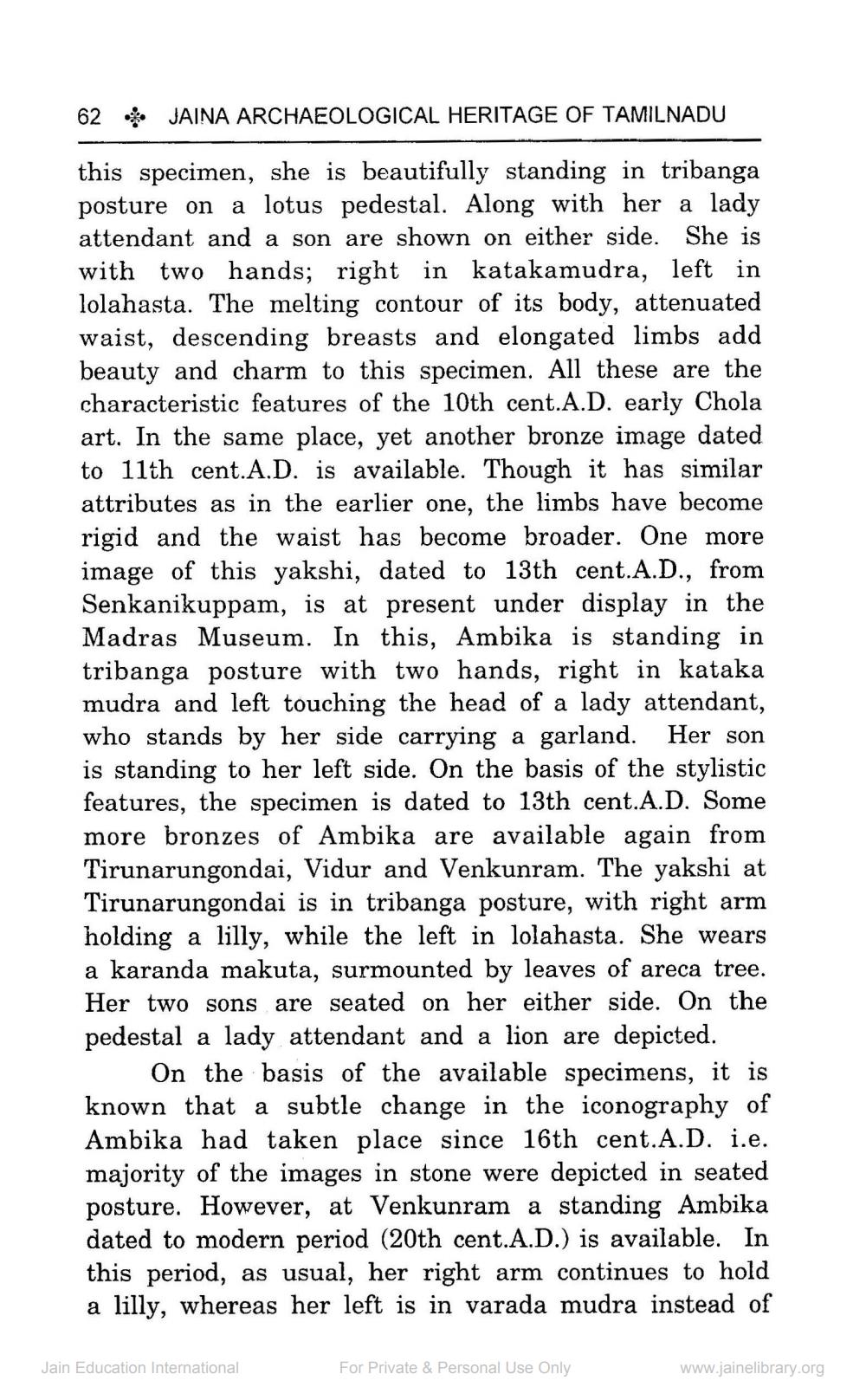________________
62
. JAINA ARCHAEOLOGICAL HERITAGE OF TAMILNADU
this specimen, she is beautifully standing in tribanga posture on a lotus pedestal. Along with her a lady attendant and a son are shown on either side. She is with two hands; right in katakamudra, left in lolahasta. The melting contour of its body, attenuated waist, descending breasts and elongated limbs add beauty and charm to this specimen. All these are the characteristic features of the 10th cent.A.D. early Chola art. In the same place, yet another bronze image dated to 11th cent.A.D. is available. Though it has similar attributes as in the earlier one, the limbs have become rigid and the waist has become broader. One more image of this yakshi, dated to 13th cent.A.D., from Senkanikuppam, is at present under display in the Madras Museum. In this, Ambika is standing in tribanga posture with two hands, right in kataka mudra and left touching the head of a lady attendant, who stands by her side carrying a garland. Her son is standing to her left side. On the basis of the stylistic features, the specimen is dated to 13th cent.A.D. Some more bronzes of Ambika are available again from Tirunarungondai, Vidur and Venkunram. The yakshi at Tirunarungondai is in tribanga posture, with right arm holding a lilly, while the left in lolahasta. She wears a karanda makuta, surmounted by leaves of areca tree. Her two sons are seated on her either side. On the pedestal a lady attendant and a lion are depicted.
On the basis of the available specimens, it is known that a subtle change in the iconography of Ambika had taken place since 16th cent.A.D. i.e. majority of the images in stone were depicted in seated posture. However, at Venkunram a standing Ambika dated to modern period (20th cent.A.D.) is available. In this period, as usual, her right arm continues to hold a lilly, whereas her left is in varada mudra instead of
Jain Education International
For Private & Personal Use Only
www.jainelibrary.org




